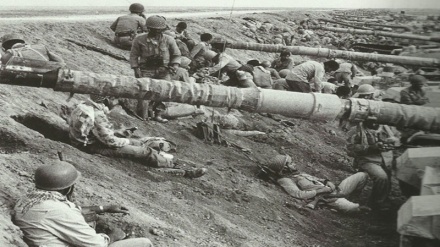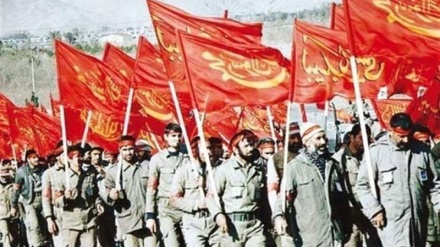Glimpses of Epic of the 8-Year Holy Defense (73)
In last week’s episode of “Glimpses of Epic of 8-Year Holy Defense”, we talked about consequences of the Val-Fajr 8 Operation. The most important reaction of the West and Saddam’s regional accomplices following the Ba’thist defeat and Iran’s capture of the Faw peninsula, was the plot to plummet the price of oil, as an economic weapon to weaken the capabilities of the Islamic Republic of Iran.
The oil price decline continued till it reached 6 dollars a barrel, because of the disparate bid by Saudi Arabia and the other Persian Gulf sheikhdoms to over produce crude and flood the world market with supplies much exceeding the demand, so that oil would become dirt cheap for the West, while Iran feels the pinch in falling revenues.
The loss of Faw infuriated Saddam and made him brazenly violate international conventions by targeting an Iranian passenger plane carrying several members of the parliament and other political figures, including Ayatollah Mahallati, the representative in the Islamic Revolution Guard Corps (IRGC) of the Father of the Islamic Revolution, Imam Khomeini (RA).
With the UN and the so-called international community turning a blind eye to his crimes, Saddam, apparently at the behest of the US, stepped up attacks on other civilian targets. He ordered an airstrike on a passenger train at the Haft Tappeh station of Khuzestan, then attacked the major oil industry on Khark Island, and Iranian towns and cities.
Iraq's strategy until now was to keep its forces behind minefields, barriers of barbed wire, and water channels, to be safe from Iran’s Muslim combatants. Baghdad now decided to open new fronts in the mountainous northern borders of the two countries at Haj Imran and Piranshahr.
The Iraqi Army opened these fronts in order to distract the attention of the Iranian forces from fortifying Faw. On May 17, 1986, the Iraqi Army launched an attack with seven brigades and two armored brigades, to occupy the city of Mehran, which had been liberated from Ba’thist occupation during the Val-Fajr 3 and Val-Fajr operations some three years ago. Iran, however, again liberated Mehran in less than 2 months by driving out the Ba’thist occupiers during the Karbala 1 operations that began with the code-word: “Ya Aba’l-Fazl-al-Abbas”.
When the Iraqi army attacked Mehran, the city was virtually empty and in view of its proximity to the border, was a relatively an easy target for the Ba’thist army, which was assisted by the MKO hypocrites. In addition to Mehran, about 220 square kilometers of Iranian lands and the important highlands of Qalavizan such as summit 223 and Hamrain Mountain as well as the Daraji checkpoint were liberated by Iran’s Muslim combatants. Karbala-1 was one of the most successful operations of the war.
AFP, following the liberation of the city of Mehran, wrote in a report: "Observers in the Persian Gulf believe that the recapture of Mehran by the Iranian forces is a defeat for Saddam." As Mehran was taken back, the world mass media pointed to the psychological dimension in different ways. For instance, the London-based Foreign Report wrote: "Mehran is in itself insignificant, the liberation of Mehran is not important from a strategic point of view, but it is important from a psychological point of view." VOA quoted military experts as saying: "The failure of Iraq may have a very significant psychological effect, because the Iraqis had gone on the offensive in a bid to remove the humiliation of their loss of the port of Faw to the Iranians."
Aside from the collapse of the Iraqi defense lines in Faw and the Ba’thist inability to recapture them, Saddam's regime was demoralized.
Thus, it is clear that the recapture of Mehran by Iran led to deep distrust of the Iraq’s military abilities by Saddam’s allies and accomplices in crimes against the Islamic Republic. The US Newsweek daily wrote: "The capture of Mehran (after Faw) severely reduced the confidence of American officials in the Iraqi regime, so that the US has limited its arms supplies to Saddam.
On the other hand, the Mehran operation, which was carried out after victory in Faw, created hope among Iranian military and political officials that Iran has the ability to end the war through military means.
FK/AS/SS


